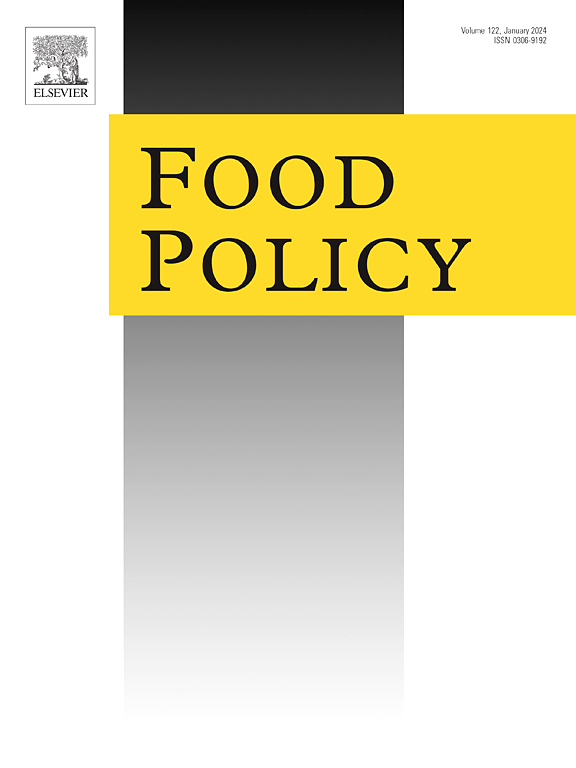Rural income diversification in Ethiopia: Drivers and welfare impact
IF 6
1区 经济学
Q1 AGRICULTURAL ECONOMICS & POLICY
引用次数: 0
Abstract
Diversification of rural households into the nonfarm economy is a key driver of economic growth and structural transformation in countries where agriculture remains the primary source of livelihood. This study examines trends and patterns of income diversification, its determinants, and its association with household welfare in rural Ethiopia. Our analysis indicates that rural households in Ethiopia continued to rely primarily on farming, with only marginal diversification of income sources during 2012–2019, despite the broader context of rapid economic growth. Crop production remains the main source of income, followed by livestock, while nonfarm activities contribute 17–24% of total household income. Factor endowments and local conditions, including rainfall, play a crucial role in shaping diversification decisions. In particular, the 2015–16 drought appears to have pushed households to increase engagement in nonfarm income-generating activities. Importantly, income diversification is associated with higher household consumption, improved dietary diversity, and better housing quality, highlighting the potential of expanding the rural nonfarm economy to enhance household welfare.
埃塞俄比亚农村收入多样化:驱动因素和福利影响
在农业仍然是主要生计来源的国家,农村家庭向非农业经济的多样化是经济增长和结构转型的关键驱动力。本研究考察了埃塞俄比亚农村地区收入多样化的趋势和模式、决定因素及其与家庭福利的关系。我们的分析表明,尽管经济快速增长的大背景下,埃塞俄比亚的农村家庭在2012-2019年期间仍然主要依赖农业,收入来源只有边际多样化。作物生产仍然是主要的收入来源,其次是畜牧业,而非农业活动贡献了家庭总收入的17-24%。要素禀赋和当地条件,包括降雨,在决定多样化方面起着至关重要的作用。特别是,2015-16年的干旱似乎促使家庭更多地参与非农业创收活动。重要的是,收入多样化与更高的家庭消费、改善的饮食多样性和更好的住房质量有关,这凸显了扩大农村非农业经济以提高家庭福利的潜力。
本文章由计算机程序翻译,如有差异,请以英文原文为准。
求助全文
约1分钟内获得全文
求助全文
来源期刊

Food Policy
管理科学-农业经济与政策
CiteScore
11.40
自引率
4.60%
发文量
128
审稿时长
62 days
期刊介绍:
Food Policy is a multidisciplinary journal publishing original research and novel evidence on issues in the formulation, implementation, and evaluation of policies for the food sector in developing, transition, and advanced economies.
Our main focus is on the economic and social aspect of food policy, and we prioritize empirical studies informing international food policy debates. Provided that articles make a clear and explicit contribution to food policy debates of international interest, we consider papers from any of the social sciences. Papers from other disciplines (e.g., law) will be considered only if they provide a key policy contribution, and are written in a style which is accessible to a social science readership.
 求助内容:
求助内容: 应助结果提醒方式:
应助结果提醒方式:


